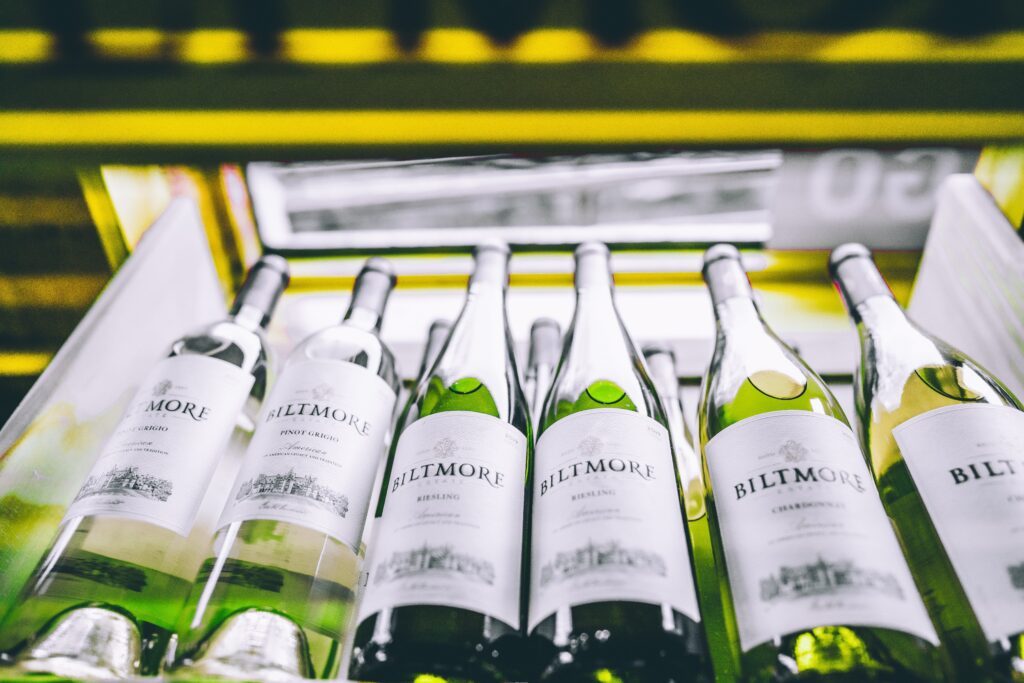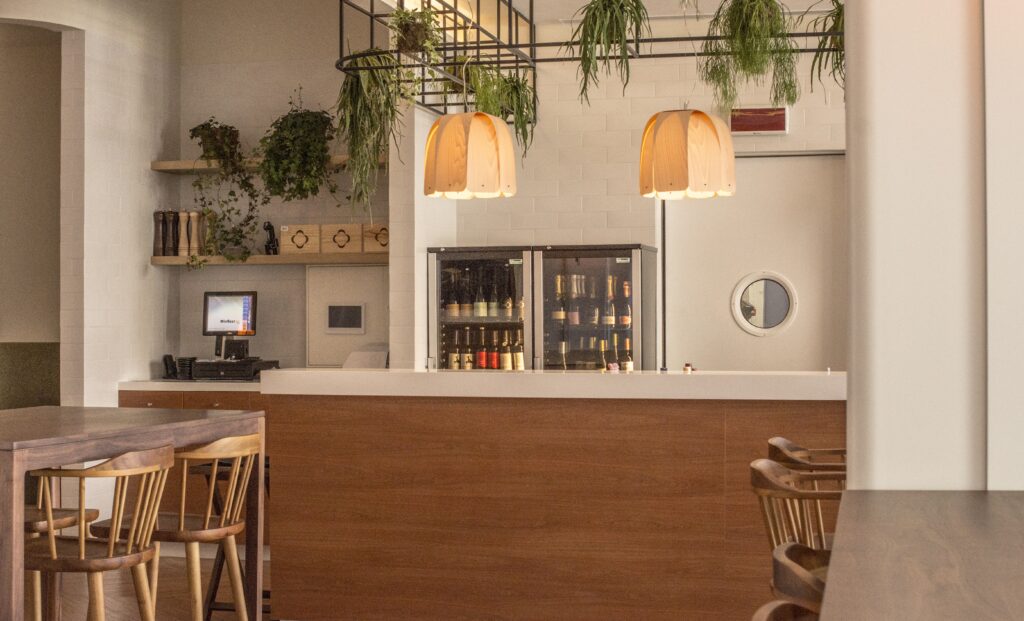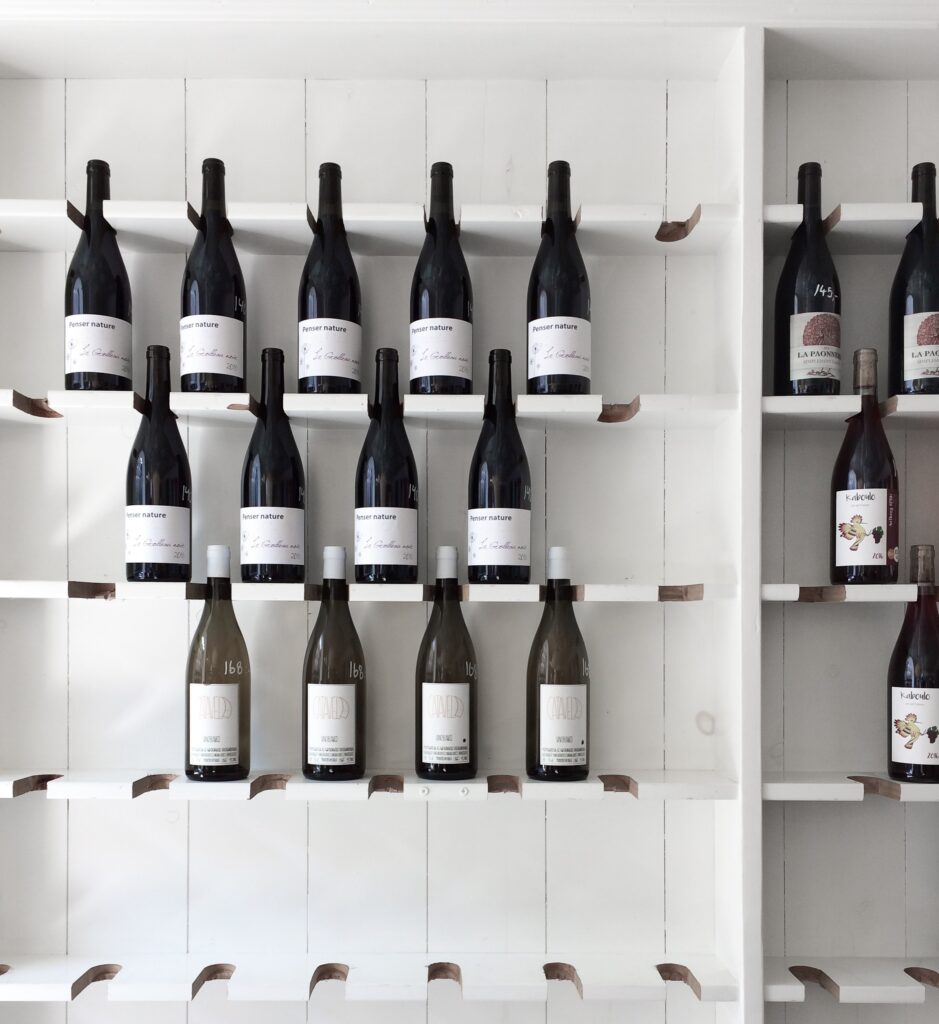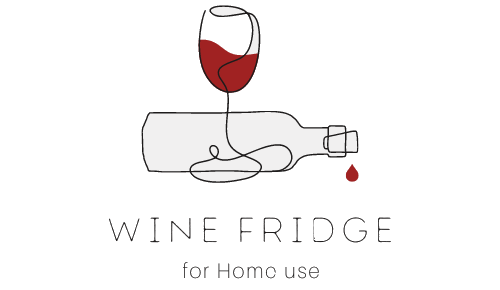If you’re a wine connoisseur or simply someone who enjoys a good bottle of red or white, you may have invested in a wine fridge to keep your precious collection at the perfect temperature. But once you have your wine fridge set up and ready to go, the question arises: how do you properly load bottles into it? Ensuring that your bottles are securely and optimally placed in the wine fridge is crucial for both the preservation and enjoyment of your wine. In this article, we will explore some tips and guidelines to help you load your bottles into your wine fridge with ease and precision. So, grab a glass and let’s dive into the proper way to load your bottles into your wine fridge!

Understanding Your Wine Fridge
When it comes to understanding your wine fridge, it’s important to recognize the different sections and appreciate the temperature zones. By becoming familiar with the fridge’s capacity, you can ensure optimal storage conditions for your precious wine collection.
Recognizing different sections
Most wine fridges are divided into distinct sections, each designed to accommodate specific bottle sizes. This allows for maximum efficiency and organization when storing your wine. Common sections you may find in a wine fridge include standard, magnum, and larger bottle sections, as well as shelves for storing opened bottles or other non-standard sizes.
Appreciating temperature zones
A key feature of wine fridges is their ability to maintain different temperature zones. This is essential for properly storing various types of wine, as different wines require different serving temperatures. For instance, red wines generally require a slightly higher temperature than white wines. By understanding and utilizing the temperature zones in your wine fridge, you can ensure that each bottle is stored at its ideal temperature.
Familiarize with fridge capacity
Before you start loading your wine fridge, it’s important to familiarize yourself with its capacity. This includes understanding the maximum number of bottles it can hold and the weight limit it can withstand. Overloading your wine fridge can lead to uneven temperature distribution and compromised storage conditions. By knowing your fridge’s capacity, you can maximize its efficiency and ensure the longevity of your wine collection.
Types of Wine Bottles
When it comes to storing wine bottles, it’s essential to understand the different sizes and shapes of bottles. These factors can affect how you load and arrange your bottles in the wine fridge, ultimately influencing the overall storage quality.
Standard wine bottle sizes
The most common wine bottle size is the standard 750 ml bottle. These bottles fit snugly in most wine fridges and are relatively easy to stack and store. However, it’s essential to be aware of other bottle sizes, such as half-bottles (375 ml), magnums (1.5 liters), or larger format bottles. These non-standard sizes may require special sections or shelves in your wine fridge to ensure proper storage.
Understanding wine bottle shapes
In addition to different sizes, wine bottles also come in various shapes. The most common shape is the Bordeaux bottle, characterized by its high shoulders and straight sides. Other popular bottle shapes include the Burgundy bottle with its sloping shoulders and the Champagne bottle with its wider body and deep punt. When loading your wine fridge, it’s important to consider these different bottle shapes to ensure a secure fit and avoid any potential rolling or displacement.
How bottle type affects storage
The type of bottle you choose can also impact the storage conditions. For example, clear glass bottles are more susceptible to UV light damage than darker-colored glass bottles, which offer better protection against light exposure. Additionally, sparkling wine bottles, such as those used for champagne, require a different storage orientation due to the pressure created by the carbonation. By taking these factors into account, you can properly load and store your wine bottles for optimal aging and preservation.

Proper Orientation of Wine Bottles
The orientation of wine bottles is crucial when it comes to maintaining the quality and preventing spoilage. By understanding the importance of horizontal storage, the issues with vertical storage, and the optimal angle for wine storage, you can ensure the longevity of your wine collection.
The importance of horizontal storage
Storing your wine bottles horizontally is essential for keeping the cork moist and preventing it from drying out. When the cork dries out, it can shrink and allow oxygen to enter the bottle, leading to oxidation and spoilage. By laying your bottles on their sides, you allow the wine to remain in contact with the cork, which helps to maintain its integrity and ensure proper aging.
Issues with vertical storage
While vertical storage might seem like a space-saving solution, it can present several issues. When wine bottles are stored upright, the cork is exposed to the air, which can lead to drying and potential spoilage. Additionally, vertical storage can cause sediment to settle unevenly in the bottle, making it more difficult to decant the wine properly. To avoid these problems, it’s best to store your wine bottles horizontally in a wine fridge.
Optimal angle for wine storage
When loading your wine fridge, it’s important to consider the optimal angle for wine storage. The ideal angle is typically between 5 and 15 degrees, allowing the wine to remain in contact with the cork while minimizing the risk of leakage. However, it’s important to consult your wine fridge’s manufacturer guidelines, as some models may have specific recommendations for the optimal storage angle. By ensuring the proper angle, you can protect your wine bottles and maintain their quality over time.
Maximizing Fridge Capacity
To make the most of your wine fridge’s capacity, it’s essential to strategically pile your wine bottles, avoid overloading, and allow for good air circulation. By following these tips, you can efficiently utilize your fridge space and store your wine collection optimally.
How to strategically pile wine bottles
When loading your wine fridge, it’s important to stack and pile your wine bottles strategically. Start with the larger bottles (magnums or larger formats) at the bottom and work your way up with the standard 750 ml bottles. This way, you can ensure stability and prevent any potential damage or accidents. Additionally, if your wine fridge has different sections or shelves, make use of them to separate different types of wine or organize them by drinking order.
Avoiding overloading
While it’s tempting to maximize the capacity of your wine fridge, it’s crucial to avoid overloading it. Overloading can lead to uneven temperature distribution and compromised storage conditions. Make sure to adhere to your wine fridge’s weight limit and follow the manufacturer’s guidelines regarding maximum bottle capacity. By giving your wine bottles enough space, you can ensure proper circulation and maintain the optimal storage environment.
Allowing for good air circulation
Proper air circulation is essential for maintaining consistent temperature and humidity levels within your wine fridge. When loading your wine bottles, be sure to leave enough room for air to flow around them. Avoid cramming the bottles tightly together, as this can restrict air movement and lead to temperature fluctuations. By allowing for good air circulation, you create a more stable and favorable environment for your wines to age gracefully.

Ordering Your Wine Collection
Organizing and ordering your wine collection not only makes it visually appealing but also enhances your overall wine experience. By sorting wine by type, arranging it by drinking order, and labeling for easy identification, you can optimize your wine fridge and have a seamless selection process.
Sorting wine by type
A common approach to organizing your wine collection is to sort it by type. This means grouping similar wines together, such as storing all your red wines in one section and your white wines in another. If your wine fridge has different sections or shelves, use them to your advantage. You can further categorize your collection by subtypes, such as Cabernet Sauvignon, Pinot Noir, Chardonnay, or Sauvignon Blanc. This sorting method not only looks visually appealing but also makes it easier to find the bottle you’re looking for.
Arranging by drinking order
Another helpful way to order your wine collection is by arranging it in the order you plan to drink it. This can be based on factors such as the wine’s age, maturity, or pairing preferences. By organizing your wine fridge in this manner, you eliminate the need to search through your collection when selecting a bottle. Instead, you can easily access the wine you desire and enjoy a hassle-free experience.
Labelling for easy identification
Labeling your wine bottles is an effective way to ensure easy identification, especially when it comes to larger collections. You can use removable tags, pre-printed labels, or even a simple marker to indicate essential information such as the wine’s name, vintage, or any specific notes. By labeling your bottles, you save time and effort when searching for a particular wine, making the selection process much more efficient.
Effects of Light and Vibration
Understanding the effects of light on wine, minimizing fridge vibration, and choosing the right spot for your fridge are crucial aspects when it comes to preserving the quality of your wine collection.
Understanding the effects of light on wine
Exposure to light, especially UV light, can be detrimental to wine quality. UV light can accelerate chemical reactions in wine, leading to premature aging and off flavors. When choosing the location for your wine fridge, ensure that it is away from direct sunlight or any other light source that may emit UV rays. Additionally, some wine fridges come with UV-protective glass doors or tinted glass to further shield the bottles from harmful light exposure.
Minimizing fridge vibration
Vibration can disrupt the aging process of wine and negatively impact its overall quality. When selecting a spot for your wine fridge, make sure to choose an area away from sources of excessive vibration, such as appliances or loud machinery. The quieter the location, the better chance your wine has to develop and mature undisturbed. By minimizing fridge vibration, you ensure that your wine bottles are not subjected to unnecessary agitation, allowing them to age gracefully.
Choosing the right spot for your fridge
The location of your wine fridge can significantly impact its performance and the quality of your wine collection. Ideally, you should place your wine fridge in a cool, dark room with a relatively stable temperature. Avoid areas such as the kitchen or laundry room, as they tend to have more temperature fluctuations and higher levels of humidity. Additionally, it’s important to provide sufficient space around the fridge for air circulation and heat dissipation. By selecting the right spot for your fridge, you create an optimal environment for your wine collection.
Temperature Management
Proper temperature management is crucial for preserving the integrity and flavors of your wine. By understanding the ideal temperature for different wines, regularly checking and adjusting the temperature, and addressing any issues with temperature fluctuations, you can ensure that your wine is stored in optimal conditions.
The ideal temperature for different wines
Different types of wines have varying ideal storage temperatures to maintain their quality. As a general guideline, full-bodied red wines, such as Cabernet Sauvignon or Syrah, are best stored between 15-18°C (59-64°F). Light-bodied reds like Pinot Noir or Beaujolais are best stored slightly cooler at 12-15°C (54-59°F). White wines, including Chardonnay or Sauvignon Blanc, are typically stored at temperatures ranging from 8-12°C (46-54°F). Sparkling wines, such as Champagne or Prosecco, should be stored colder at 5-8°C (41-46°F). By maintaining these ideal temperatures, you enhance the aging process and ensure the flavors and aromas of your wines are preserved.
Checking and adjusting the temperature
Regularly checking and adjusting the temperature in your wine fridge is essential to maintain a consistent storage environment. Invest in a reliable thermometer or use the built-in temperature display of your fridge to monitor the temperature. If you notice any deviations from the desired range, make the necessary adjustments by consulting the fridge’s manual or contacting the manufacturer. It’s important to address any temperature issues promptly to prevent any negative effects on your wine’s quality.
Issues with temperature fluctuations
Temperature fluctuations can have a detrimental impact on the aging and quality of your wine. Rapid changes in temperature can cause the wine to expand and contract, potentially leading to a compromised seal and increased oxidation. To minimize temperature fluctuations, avoid placing your wine fridge near heat sources or areas with significant temperature variations. Additionally, ensure that the fridge’s door is properly sealed and that the temperature controls are functioning correctly.
FAQs About Wine Fridge Loading
As you navigate the world of wine fridge loading, you may come across some common questions regarding mixing different types of wine, accommodating a small wine fridge, or storing opened bottles. Here are some helpful answers to these frequently asked questions.
Can I mix different types of wine in my fridge?
Yes, you can mix different types of wine in your fridge. However, it’s important to consider the different ideal storage temperatures for each type of wine. By organizing your wine fridge according to temperature zones, you can ensure that each bottle is stored at its optimal temperature. This may involve separating the reds and whites or utilizing different sections or shelves within the fridge. Additionally, keeping similar wines together can make it easier to locate specific bottles when needed.
What if my wine fridge is too small?
If your wine fridge is too small to accommodate your entire wine collection, you have a few options. One option is to prioritize and select the bottles that need to be stored at a specific temperature. These can be placed in the wine fridge, while the remaining bottles can be stored in a cool, dark area with consistent temperatures. Another option is to consider expanding your storage capacity by investing in additional wine fridges or utilizing alternative storage solutions, such as wine racks or cellars. Ultimately, it’s important to find a solution that suits your needs and allows you to properly store and enjoy your wine collection.
Can I store opened bottles in my wine fridge?
Yes, you can store opened bottles in your wine fridge, especially if you plan to consume the remaining wine within a few days. However, it’s important to remember that even a wine fridge has limitations. Once a bottle has been opened, the process of oxidation begins, and the wine’s flavors and aromas will gradually change. To preserve the wine as best as possible, reseal the bottle with a wine stopper and place it in the wine fridge at a slightly lower temperature than the ideal storage temperature for that specific type of wine. This can help slow down the oxidation process and extend the wine’s drinkability. However, it’s best to consume opened bottles within a reasonable timeframe to fully enjoy their freshness and flavors.
By understanding your wine fridge, properly loading and arranging your bottles, and implementing best practices for temperature and storage, you can ensure that your wine collection remains in excellent condition. Whether you’re a casual wine enthusiast or a passionate connoisseur, taking the time to optimize your wine storage can greatly enhance your overall wine experience. Cheers to a perfectly loaded wine fridge and many delightful sips ahead!
